B-25 B Airfix 1:72 Dolittle Ride
Once upon a time, when I was in elementary school, my favorite game was a strategy board game called Hell in the Pacific. Each player took the role of an air force commander and tried to destroy the enemy fleet, primarily aircraft carriers. There were many types of planes to be used in the game and despite the fact that it can be considered partially underdeveloped taking into account the current aviation knowledge, for
example in terms of the real strength and resistance to hits of individual machines, it was an extremely interesting entertainment at the time. So much for the introduction about my interests in military operations in the Pacific. Coming back to the current history of the Tokyo Raid of April 18, 1942, already at that time I considered it a unique event that changed the course of the war on a strategic scale. Yamamoto, due to the raid of 16 bombers and their tactically quite small impact, changes the direction of the attack on Midway, which ended the Japanese victorious march through the Pacific islands, moreover, he assigns a significant air force to defend the home islands, composed of trained pilots.
The whole epic, full of difficulties and unforeseen events, led to a complete success, as well as an increase in the morale of the inhabitants of the United States. another interesting fact was, that quite by accident I decided to fly a plane with its own name "Ruptured Duck". I had no idea that this plane played the main role in the movie "Forty Seconds Over Tokyo", and (I'm ashamed to admit it), I only got to know this movie when I started building the model.
About the plane: B-25B Mitchell serial number 40-2261. Built by North American Aviation (NAA), constructors Number 62B-2930. Delivered to US Air Force tp 17th BG, 95th BS
The aircraft takes off on April 18, 1942 at 8.43 am as aircraft No. 7. On board it has a load of three 500 lb. high-explosive bombs and one AN-50A2 4-pound incendiary bomb in a bundle with a total weight of 500 lb. (102 incendiary elements). In the video before the start, problems with the ignition of one of the engines were visible. I have not been able to determine whether it was just the director's fantasy or a real incident.
The crew consisted of:
Pilot Lt. Ted W. Lawson, O-399549 (WIA, survived)
Co-Pilot Lt. Dean Davenport, O-427310 (WIA, survived)
Navigator Lt. Chas. L. McClure, O-431647 (WIA, survived)
Bombardier Lt. Robert S. Clever, O-432336 (WIA), survived
Engineer Sgt. David J. Thatcher, 19019573 (WIA, survived).
Due to contact with the enemy ship Nitto Maru No 19, the planes take off 10 hours ahead of schedule and have 160 nautical miles more to cover, which of course will affect the premature exhaustion of fuel.
Over Tokyo, the first bomb hits an aluminum smelter, the second bomb hits a tank factory, and the third bomb hits an arms depot. Elements of the incendiary bomb hit the industrial district, igniting nuisance fires. Then the crew, all the time flying at a very low altitude, reached the coast of China, where the fuel ran out. The plane lands at the shore in the China Sea west of Shangchow. The entire crew is more or less injured, however, they manage to inflate and board the life raft. The flight engineer whose injuries are the most superficial returns to the wreckage and takes out a first aid kit with meds. In the face of the situation, Engineer Sgt. David J. Thatcher takes command, forces the Chinese fishermen encountered to carry the three most wounded crew members through the difficult mountain terrain to a town occupied by Kuomitang forces. Thanks to his attitude, the entire crew was saved. Unfortunately, I do not know what decoration he received for his heroic attitude. In total, he was awarded the Silver Star, Distinguished Flying Cross, Air Medal with 4 Oak Leaf Clusters, and the Chinese Army, Navy, and Air Corps Medal, Class A, 1st Grade. I believe that for the mission on April 18, 1942, he could have received the Distinguished Flying Cross.
Model. The Airfix B-25 set can be considered really successful, requiring no aftermarket additions. However, for peace of mind and increased realism, I ordered bronze casts of the landing gear legs to strengthen it, because in order to prevent the plane from landing on its tail, it needs to be given a large amount of lead. I added about 40 grams of lead, literally pushing it into every free space of the nose. Here, a better solution is probably the aftermarket set of the nose compartment made of white metal, which, without interfering with the interior of the aircraft, significantly weighs down the nose. But here, unfortunately, it was a reflection after construction. The aircraft has a very rich interior, equipped bomb bay, tilted flaps and movable ailerons in the tail. It's a really well-designed kit. The downside are errors in the manual, referring to non-existent parts and frames with numbers, also wrong interior painting information. The plane was of course painted with Mr Color OD and NG paints, amd also good Oil Wash from Modeler's World brand. Final coat was X-35 semi gloss clear. I decided on the figures of the crew in the middle from the company of legends (excellent!) and the figures standing on the surface of the diorama, which was the laser-cut deck of the aircraft carrier. These unfortunately were not so good in desing as Legend brand. In addition, I used aftermarket decals by DK-Decal (there were some problems when applying the decals when I mixed up the diameters of the stars of the national markings. That would probably be all. Oh, I can say that the transparent parts were almost perfect, but the gray plastic parts were susceptible to breaking and you have to be very careful about it (my ladder broke). Well, all I can say is that Lieutenant Lis will return soon with another project, although in order to finish it before the end of the year, hopefully smaller and more cat-therapeutic...
PS. Today I realized that I am writing this article on the eve of the anniversary of the attack on Pearl Harbor. Nothing happens by chance...
Weather was so bad during taking photos so You can see some water drops on Mitchell, and crew 🙂
Short slideshow about B-25 Ruptured Duck:
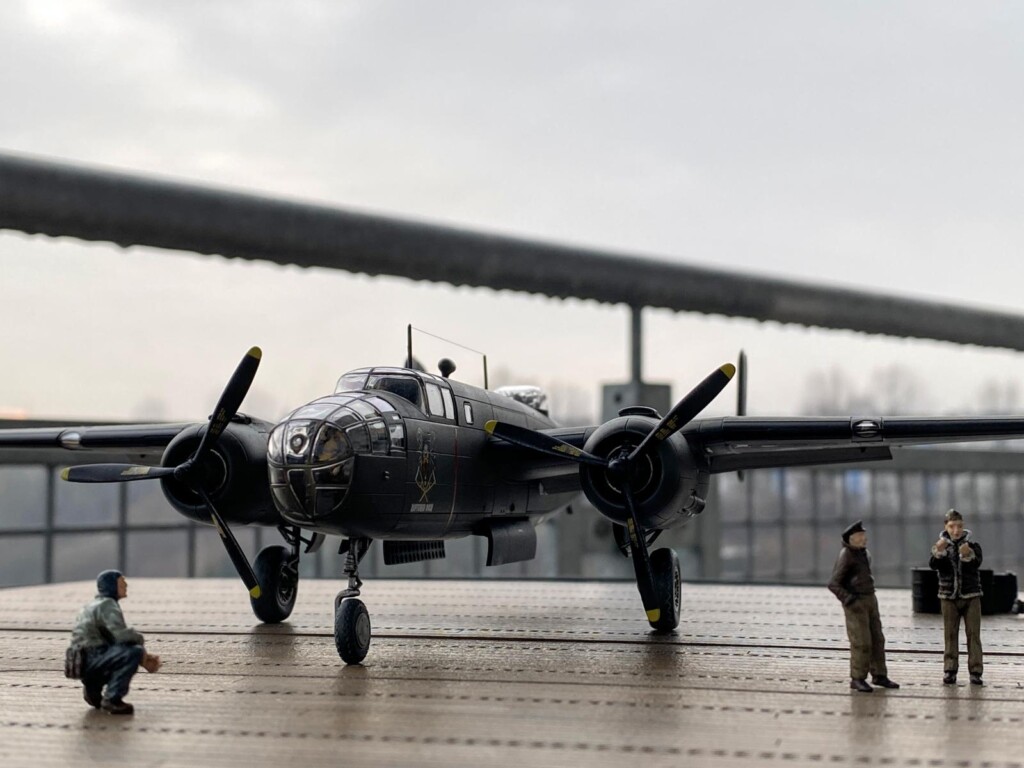

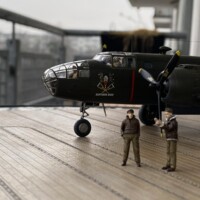
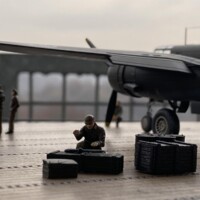
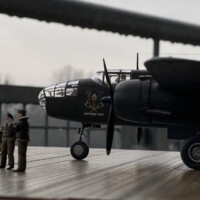
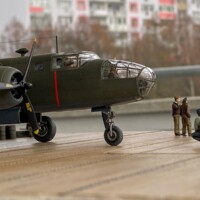
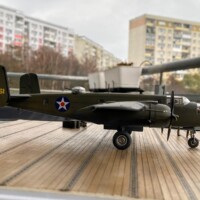
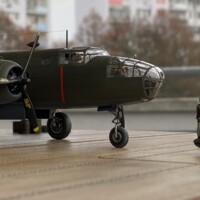
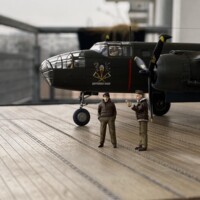
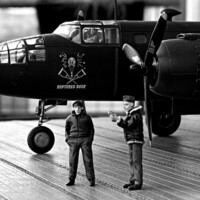
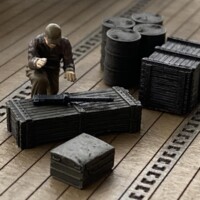
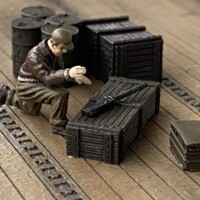
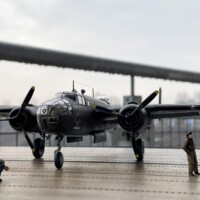
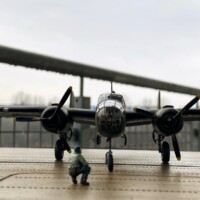
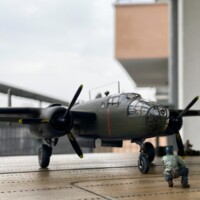
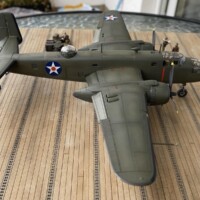
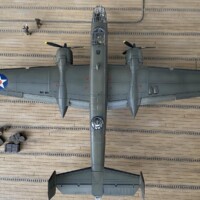
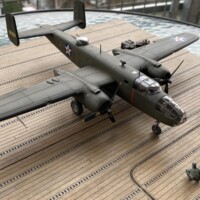
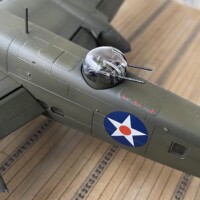
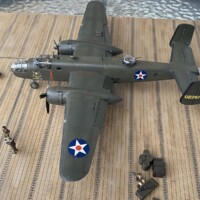
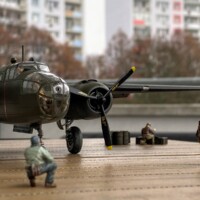
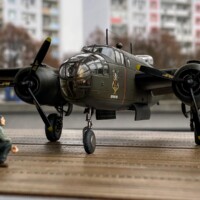

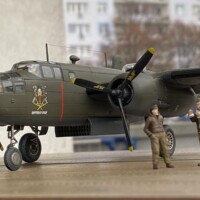

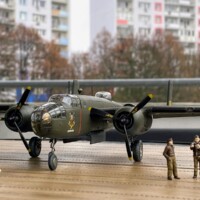
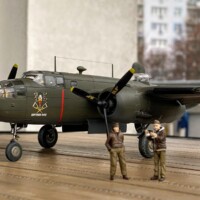
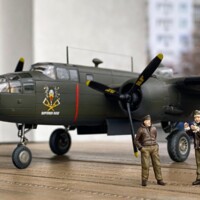
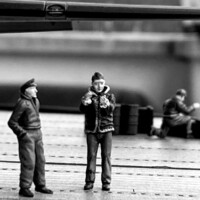
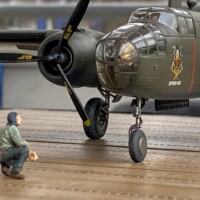
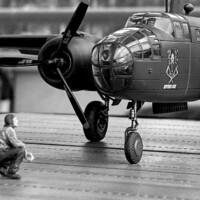
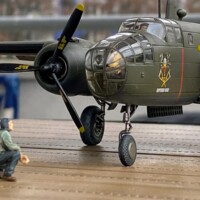

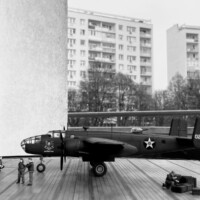
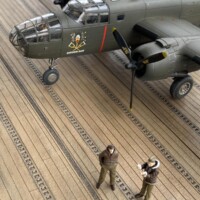

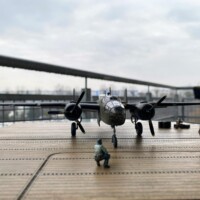
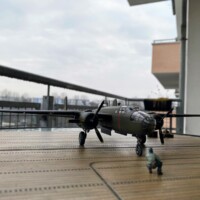
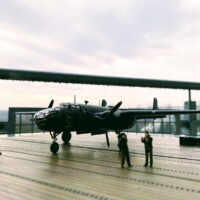
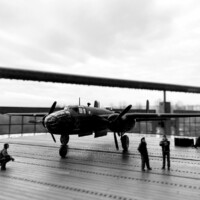
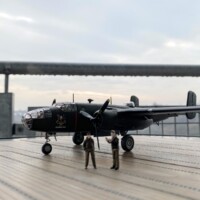
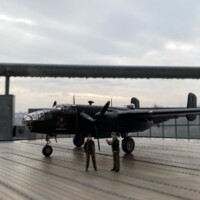
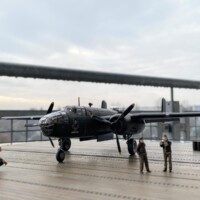

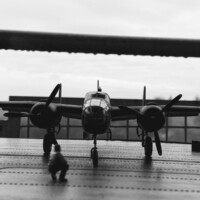
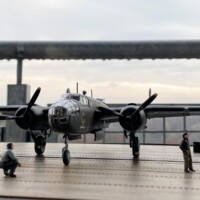
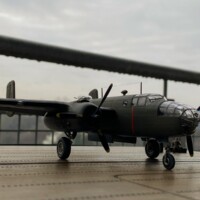
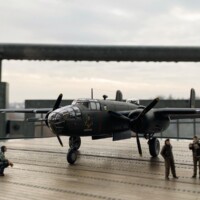
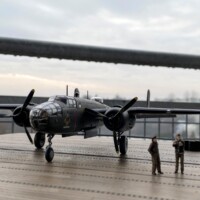
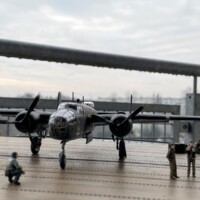
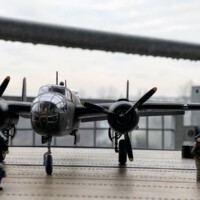
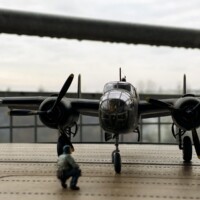
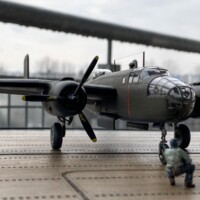
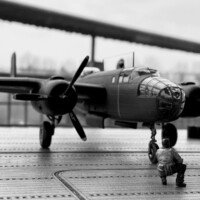
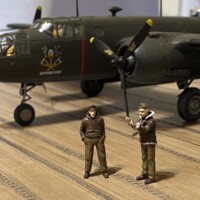

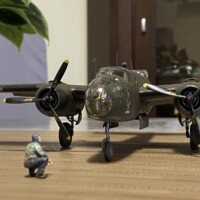
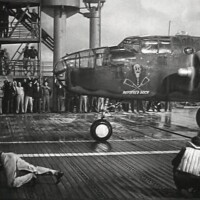
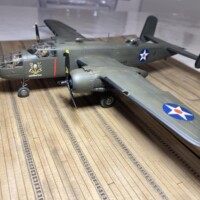
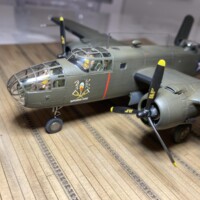

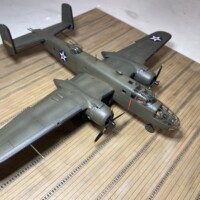
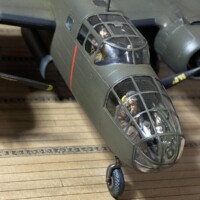
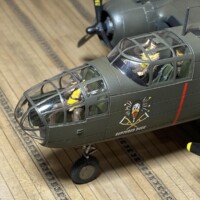
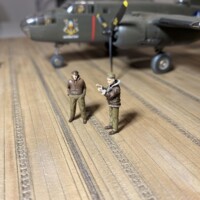
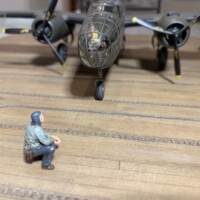
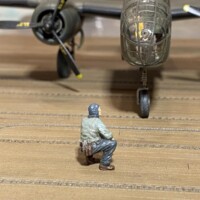
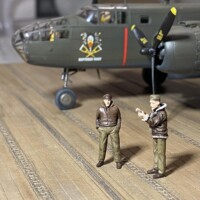
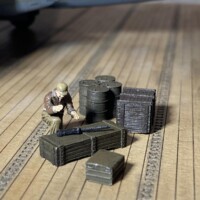
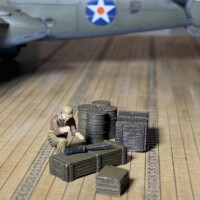
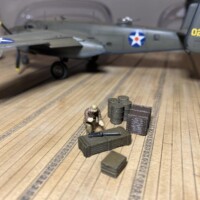
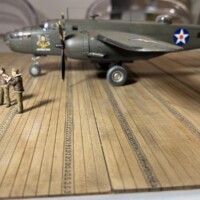

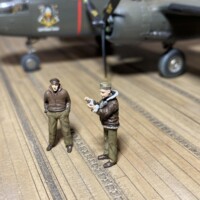
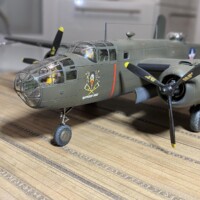
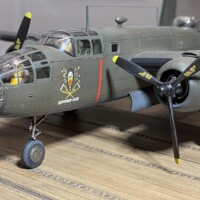
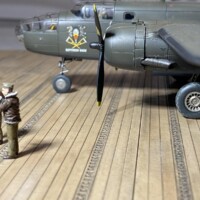
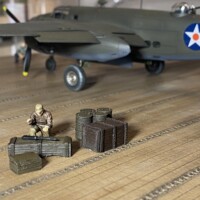
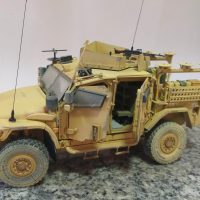
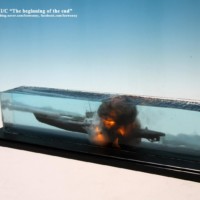
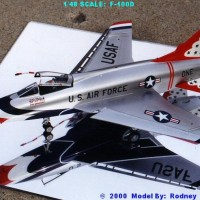
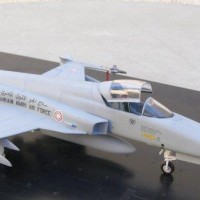
Your Doolittle Mitchell looks really amazing, Bernard @lis
To me this is definitely one of your best builds and looks perfect on this base.
Thanks for the great supporting historical background which is a pleasure to read.
It was a pleasure to follow your thread, which turned into a perfect tutorial for others who like to build this aircraft.
Well done.
Ditto what our friend @johnb said, my friend @lis! Everything is superb and your build thread a joy to follow.
Congratulations!
@johnb @fiveten Thank you for always cheering me on at work, even in these difficult moments. It's a big support
That is a beauty.
Cracking job.
Thank You!
@lis - this is a really excellent piece of work. Good effort and a great result. The model looks very realistic; you got the most out of what was there.
A minor point, it's "Thirty Seconds Over Tokyo" (not a complaint).
One thing the movie and a lot of the history of this event leave out is that, afterwards, the Japanese Army went through the region where the Raiders came down and were helped by the Chinese, and over 250,000 Chinese people were slaughtered. Bodies were stuffed in wells to destroy the water, terrible methods of murder were used, and many other atrocities were committed, mostly against people who had never had anything to do with helping the raiders escape. It was an orgy of rage by the Japanese, that they had been "humiliated" by the attack. Another part of history the Japanese continue to deny, along with the Rape of Nanking, the death railway in Thailand, the death camp POW camps in Malaya, the Bataan Death March, Unit 719 and the biological warfare experiments carried out on humans. The Japanese were never forced to confront their crimes as the Germans were.
@tcinla Thank you for your words of appreciation! I'm really glad you like the model. At the same time, I am shocked by the extent of the repression against the Chinese. Why was there no trial of war criminals in Japan after the war? I heard about unit 719 that it was conducting tests with chemical and biological weapons. After all, American intelligence must have known about it and then they did nothing about it? Political reasons? Post-war alliance with Japan against communist China and Korea?
PS. Sorry for the wrong movie title - I don't know why I wrote forty 🙂
Well done, Bernard (@lis). Excellent planning on your part to set up your photo shoot in the same type of conditions as the actual event. It was great to follow your WIP, and the results showcase all of the extra effort you did on the plane and diorama. About your question of war trials, if I recall correctly, there were 2 war trials held in 1946, one in Tokyo and one in Manila. I think there were members of the US, Britain, France, Australia, Netherlands, and China on the court. I think they had all of the key players on the Japanese side in custody, and they were all found guilty. The Emperor was excluded from the trials. That's about all I remember, you can Google Japanese War Crime Trials if you want more info. Anyway, well done.
@gblair I'm glad that You like my work! I am glad that we can build together in this group. PS. But members 719 unit didn't have any problems after war. Maybe the intelligence took it over, kept it secret and used the experience of these people?
Perhaps people were saved because they could help with US technology, for instance the German rocket scientists like Werner Von Braun. I think they tended to go after the political leaders, and the influential military leaders. There was some wiggle room as you moved farther down the hierarchy.
Great work, Bernard. You’ve given me inspiration to move mine up the schedule.
Thank You! I will be waiting on Your B-25!
Great write-up, great model, great photographs, an all round perfect posting.
Thank You!
Nicely done and presented Lis.
I'm glad that You like it!
Excellent work Lis, great looking B-25!
Thank You!
Very nice - well done!
Thank You!
Beautiful work, Lis! The natural light and stormy day really enhance the look of the model. Fantastic looking carrier deck also.
@georgeswork I'm glad you like the pictures with stormy weather, I had my doubts, but I think the effect is quite decent after all. The deck is a really cool thing. I was able to cut it out with no problems.
Is it me or do some modelers and their models keep getting better. Some strong work Lis (@lis)
@stephen-w-towle Thank You! Your encouragement at work and advice are invariably useful for my next projects.
Beautiful work!
Thank You!